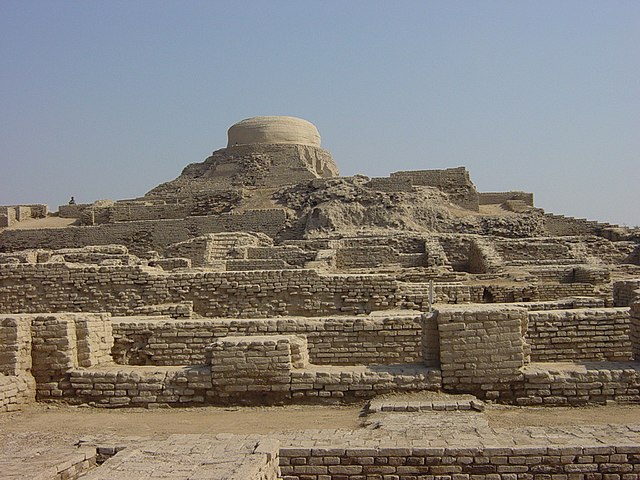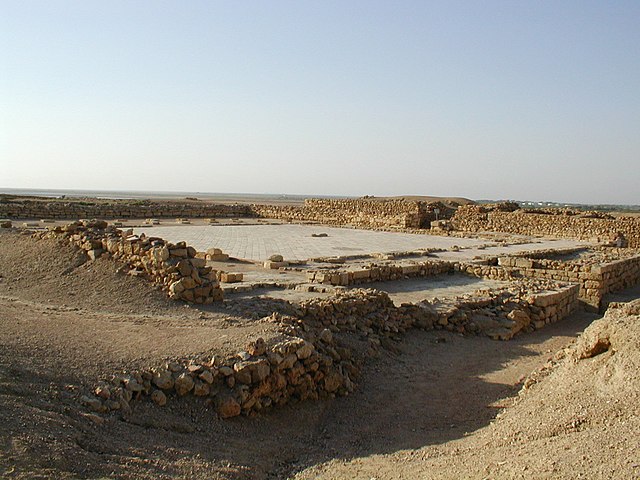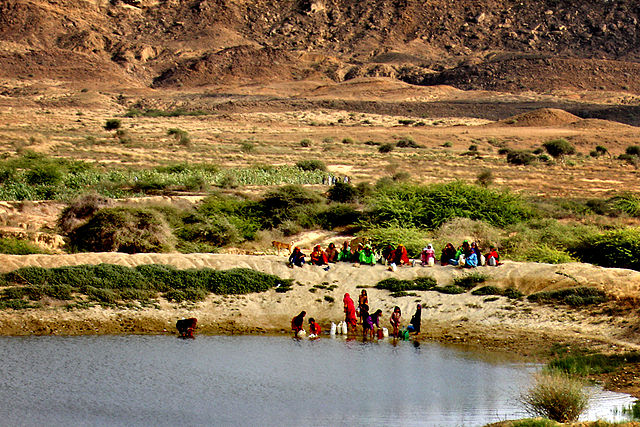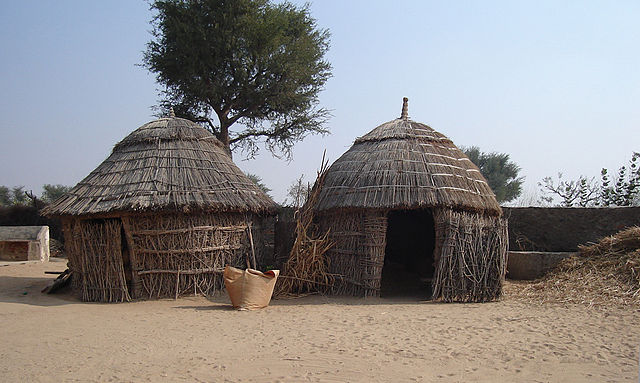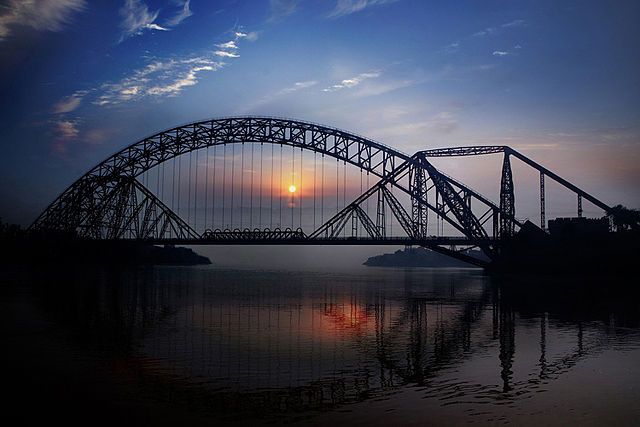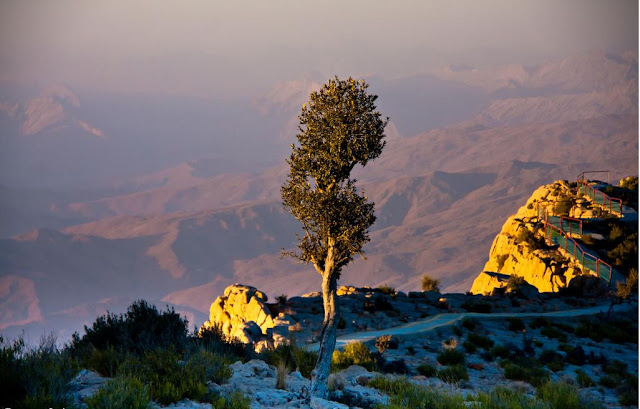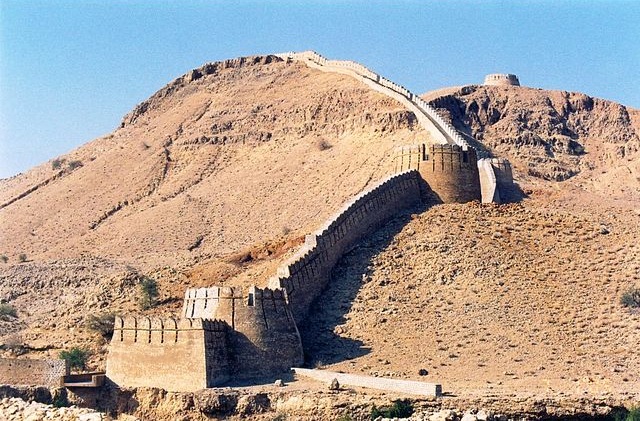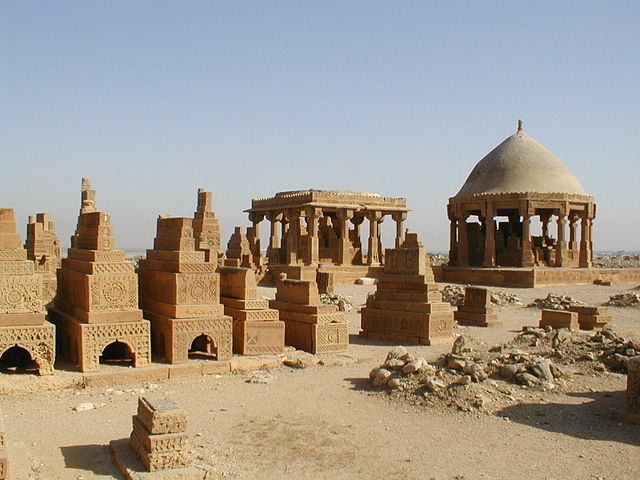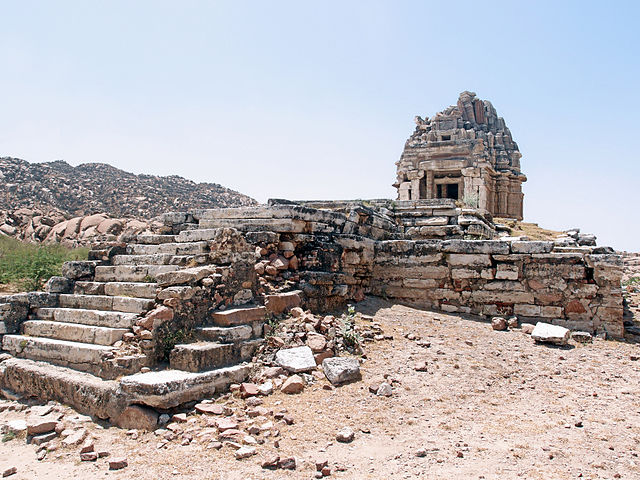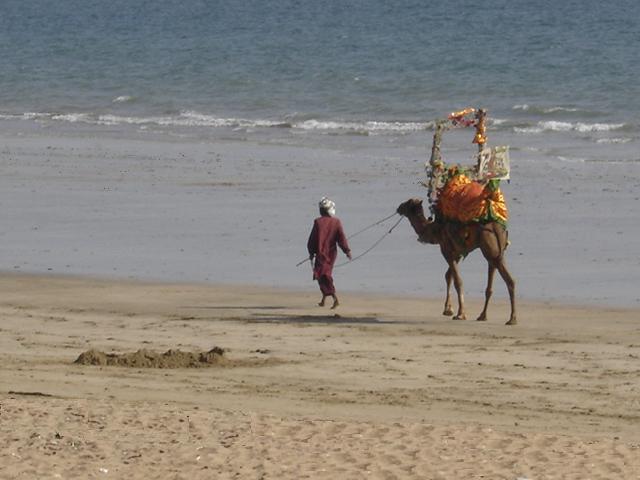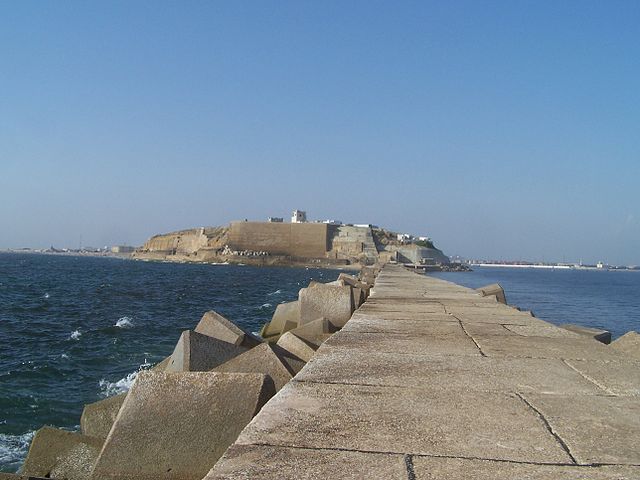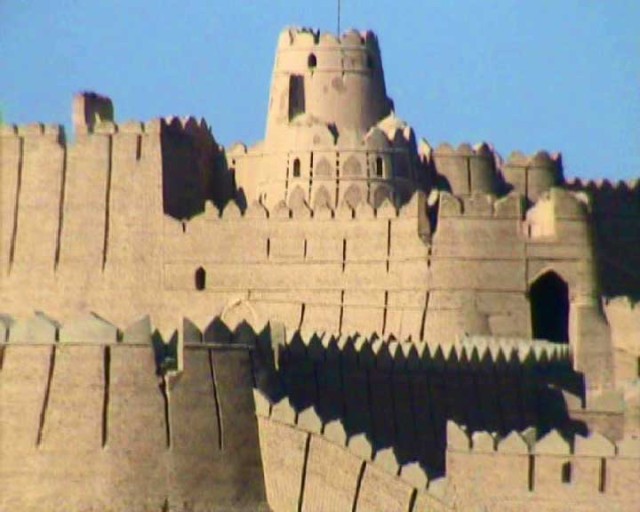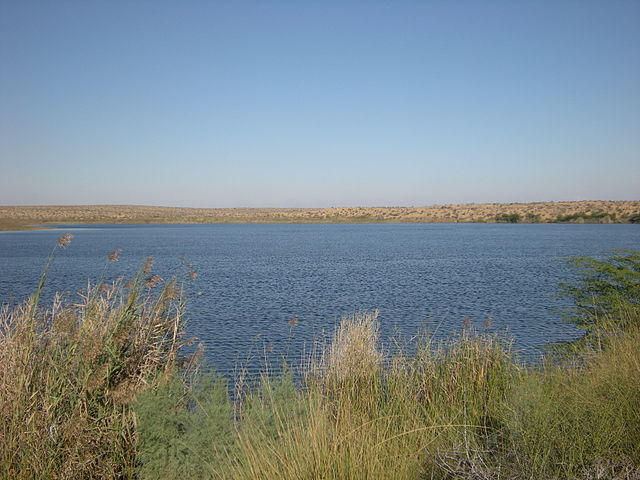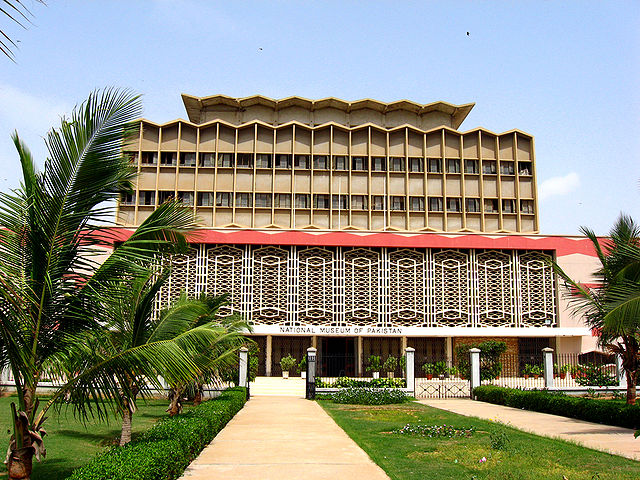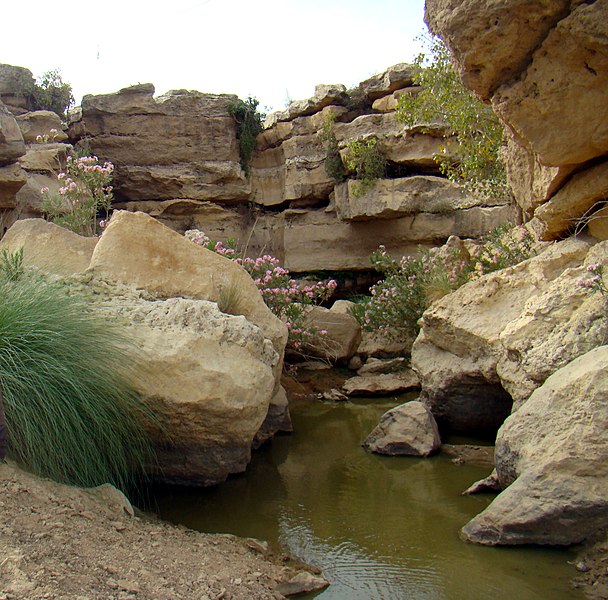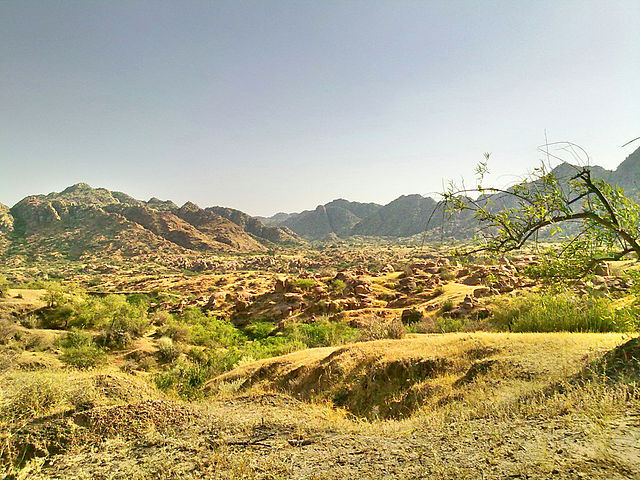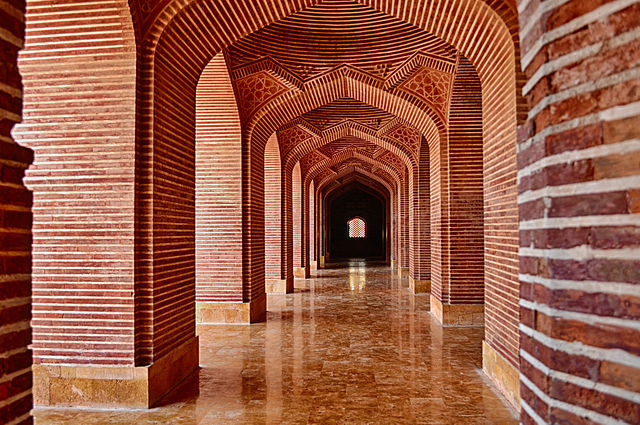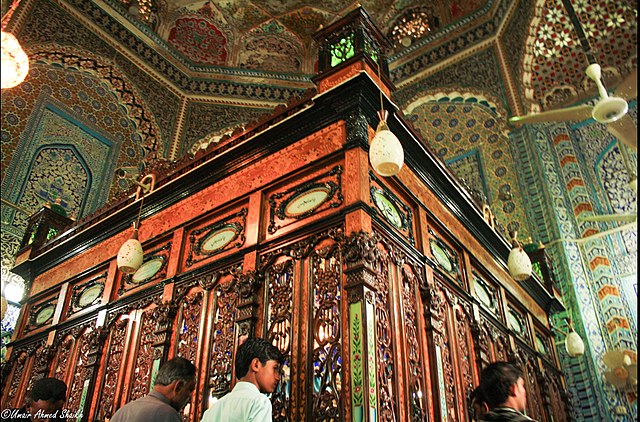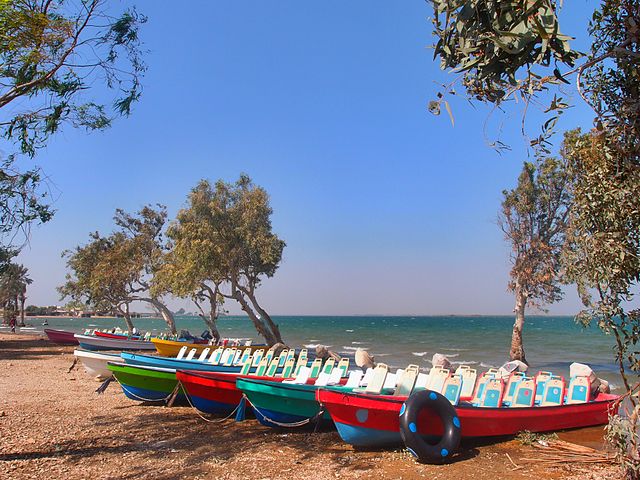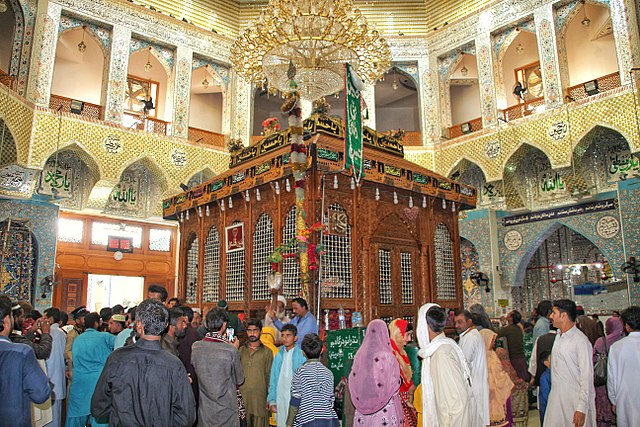
| SINDH Sindh Nickname(s) : Mehran (Gateway), Bab-ul-Islam (Gateway of Islam)
Jinnah Mausoleum/Mazar-e-Quaid
Sindh Madressatul Islam University
Ranikot Fort
Faiz Mahal
Nagan
Chowrangi flyover
Ayub Bridge adjacent to Lansdowne Bridge
Flag
Seal
Location of Sindh in Pakistan Sindh is one of the four provinces of Pakistan. Located in the southeast of the country, it is the home of the Sindhi people. Sindh is the third largest province of Pakistan by area and second largest province by population after Punjab. Sindh is bordered by Balochistan province to the west and Punjab province to the north. Sindh also borders the Indian states of Gujarat and Rajasthan to the east and Arabian Sea to the south. Sindh's landscape consists mostly of alluvial plains flanking the Indus River, the Thar desert in the eastern portion of the province closest to the border with India and the Kirthar Mountains in the western part of Sindh.
Sindh has Pakistan's second largest economy, while its provincial capital Karachi is Pakistan's largest city and financial hub and hosts the headquarters of several multinational banks. Sindh is home to a large portion of Pakistan's industrial sector and contains two of Pakistan's commercial seaports, Port Bin Qasim and the Karachi Port. The remainder of Sindh has an agriculture based economy and produces fruits, food consumer items and vegetables for the consumption of other parts of the country.
Sindh is known for its distinct culture which is strongly influenced by Sufism, an important marker of Sindhi identity for both Hindus (Sindh has Pakistan's highest percentage of Hindu residents) and Muslims in the province. Several important Sufi shrines are located throughout the province which attract millions of annual devotees.
Sindh is home to two UNESCO World Heritage Sites – the Historical Monuments at Makli and the Archaeological Ruins at Mohenjodaro.
Etymology
:
Southworth suggests that the name Sindhu is in turn derived from Cintu, a Dravidian word for date palm, a tree commonly found in Sindh.
The official spelling "Sind" was discontinued in 1988 by an amendment passed in Sindh Assembly.
The Greeks who conquered Sindh in 325 BC under the command of Alexander the Great rendered it as Indós, hence the modern Indus. The ancient Iranians referred to everything east of the river Indus as hind.
History
:
Extent and major sites of the Indus Valley Civilization in pre-modern Pakistan and India 3000 BC
The Priest-King from Mohenjo-daro, more than 4000 years old, in the National Museum of Pakistan, Larkana
Excavated ruins of Mohenjo-daro, Larkana Sindh's first known village settlements date as far back as 7000 BC. Permanent settlements at Mehrgarh, currently in Balochistan, to the west expanded into Sindh. This culture blossomed over several millennia and gave rise to the Indus Valley Civilization around 3000 BC. The Indus Valley Civilization rivalled the contemporary civilizations of Ancient Egypt and Mesopotamia in size and scope, numbering nearly half a million inhabitants at its height with well-planned grid cities and sewer systems.
According
to some accounts, there is no evidence of large palaces or burial
grounds for the elite. The grand and presumably holy site might
have been the great bath, which is built upon an artificially created
elevation. This civilization collapsed around 1700 BC for reasons
uncertain; the cause is hotly debated and may have been a massive
earthquake, which dried up the Ghaggar River. Skeletons discovered
in the ruins of Moan Jo Daro ("mount of dead") were thought
to indicate that the city was suddenly attacked and the population
was wiped out, but further examinations showed that the marks on
the skeletons were due to erosion and not of violence.
Mauryan rule ended in 185 BC with the overthrow of the last king by the Shunga Dynasty. In the disorder that followed, Greek rule returned when Demetrius I of Bactria led a Greco-Bactrian invasion of India and annexed most of the northwestern lands, including Sindh. Demetrius was later defeated and killed by a usurper, but his descendants continued to rule Sindh and other lands as the Indo-Greek Kingdom. Under the reign of Menander I, many Indo-Greeks followed his example and converted to Buddhism.
In the late 2nd century BC, Scythian tribes shattered the Greco-Bactrian empire and invaded the Indo-Greek lands. Unable to take the Punjab region, they invaded South Asia through Sindh, where they became known as Indo-Scythians (later Western Satraps). By the 1st century AD, the Kushan Empire annexed Sindh. Kushans under Kanishka were great patrons of Buddhism and sponsored many building projects for local beliefs. Ahirs were also found in large numbers in Sindh. Abiria country of Abhira tribe was in southern Sindh. The Kushan Empire was defeated in the mid 3rd century AD by the Sassanid Empire of Persia, who installed vassals known as the Kushanshahs in these far eastern territories. These rulers were defeated by the Kidarites in the late 4th century.
It then came under the Gupta Empire after dealing with the Kidarites. By the late 5th century, attacks by Hephthalite tribes known as the Indo-Hephthalites or Hunas (Huns) broke through the Gupta Empire's northwestern borders and overran much of northwestern India. Concurrently, Ror dynasty ruled parts of the region for several centuries.
Afterwards, Sindh came under the rule of Emperor Harshavardhan, then the Rai Dynasty around 478. The Rais were overthrown by Chachar of Alor around 632. The Brahman dynasty ruled a vast territory that stretched from Multan in the north to the Rann of Kutch, Alor was their capital.
Arrival of Islam :
Arab Muslim rule in Pakistan region
Sindh captured by the Umayyads
The connection between the Sindh and Islam was established by the initial Muslim missions during the Rashidun Caliphate. Al-Hakim ibn Jabalah al-Abdi, who attacked Makran in the year AD 649, was an early partisan of Ali ibn Abu Talib. During the caliphate of Ali, many Jats of Sindh had come under the influence of Shi'ism and some even participated in the Battle of Camel and died fighting for Ali. Under the Umayyads (661 – 750 AD), many Shias sought asylum in the region of Sindh, to live in relative peace in the remote area. Ziyad Hindi is one of those refugees.
Muhammad Ali Jinnah claimed that the Pakistan movement started when the first Muslim put his foot on the soil of Sindh, the Gateway of Islam in India.
In 712, Muhammad bin Qasim conquered the Sindh and Indus Valley, bringing South Asian societies into contact with Islam. Raja Dahir Sen was an Hindu king that ruled over a Buddhist majority and that Chach of Alor and his kin were regarded as usurpers of the earlier Buddhist Rai Dynasty, a view questioned by those who note the diffuse and blurred nature of Hindu and Buddhist practices in the region, especially that of the royalty to be patrons of both and those who believe that Chach may have been a Buddhist. The forces of Muhammad bin Qasim defeated Raja Dahir in alliance with the Hindu Jats and other regional governors.
In 711 AD, Muhammad bin Qasim led an Umayyad force of 20,000 cavalry and 5 catapults. Muhammad bin Qasim defeated the Raja Dahir and captured the cities of Alor, Multan and Debal. Sindh became the easternmost State of the Umayyad Caliphate and was referred to as "Sind" on Arab maps, with lands further east known as "Hind". Muhammad bin Qasim built the city of Mansura as his capital; the city then produced famous historical figures such as Abu Mashar Sindhi, Abu Ata al-Sindhi, Abu Raja Sindhi and Sind ibn Ali. At the port city of Debal, most of the Bawarij embraced Islam and became known as Sindhi Sailors, who were renowned for their navigation, geography and languages. After Bin Qasim left, the Umayyads ruled Sindh through the Habbari dynasty.
By the year 750, Debal (modern Karachi) was second only to Basra; Sindhi sailors from the port city of Debal voyaged to Basra, Bushehr, Musqat, Aden, Kilwa, Zanzibar, Sofala, Malabar, Sri Lanka and Java (where Sindhi merchants were known as the Santri). During the power struggle between the Umayyads and the Abbasids. The Habbari Dynasty became semi independent and was eliminated and Mansura was invaded by Sultan Mahmud Ghaznavi. Sindh then became an easternmost State of the Abbasid Caliphate ruled by the Soomro Dynasty until the Siege of Baghdad (1258). Mansura was the first capital of the Soomra Dynasty and the last of the Habbari dynasty. Muslim geographers, historians and travelers such as al-Masudi, Ibn Hawqal, Istakhri, Ahmed ibn Sahl al-Balkhi, al-Tabari, Baladhuri, Nizami, al-Biruni, Saadi Shirazi, Ibn Battutah and Katip Çelebi wrote about or visited the region, sometimes using the name "Sindh" for the entire area from the Arabian Sea to the Hindu Kush.
Soomra
dynasty period :
When the Soomro dynasty lost ties with the Abbasid Caliphate after the Siege of Baghdad (1258,) the Soomra ruler Dodo-I established their rule from the shores of the Arabian Sea to the Punjab in the north and in the east to Rajasthan and in the west to Pakistani Balochistan. The Soomros were one of the first indigenous Muslim dynasties in Sindh of Parmar Rajput origin. They were the first Muslims to translate the Quran into the Sindhi language. The Soomros created a chivalrous culture in Sindh, which eventually facilitated their rule centred at Mansura. It was later abandoned due to changes in the course of the Puran River; they ruled for the next 95 years until 1351. During this period, Kutch was ruled by the Samma Dynasty, who enjoyed good relations with the Soomras in Sindh. Since the Soomro Dynasty lost its support from the Abbasid Caliphate, the Sultans of Delhi wanted a piece of Sindh. The Soomros successfully defended their kingdom for about 36 years, but their dynasties soon fell to the might of the Sultanate of Delhi's massive armies such as the Tughluks and the Khaljis.
Samma Dynasty period :
In 1339 Jam Unar founded a Sindhi Muslim Rajput Samma Dynasty and challenged the Sultans of Delhi. He used the title of the Sultan of Sindh. The Samma tribe reached its peak during the reign of Jam Nizamuddin II (also known by the nickname Jám Nindó). During his reign from 1461 to 1509, Nindó greatly expanded the new capital of Thatta and its Makli hills, which replaced Debal. He patronized Sindhi art, architecture and culture. The Samma had left behind a popular legacy especially in architecture, music and art. Important court figures included the poet Kazi Kadal, Sardar Darya Khan, Moltus Khan, Makhdoom Bilawal and the theologian Kazi Kaadan. However, Thatta was a port city; unlike garrison towns, it could not mobilize large armies against the Arghun and Tarkhan Mongol invaders, who killed many regional Sindhi Mirs and Amirs loyal to the Samma. Some parts of Sindh still remained under the Sultans of Delhi and the ruthless Arghuns and the Tarkhans sacked Thatta during the rule of Jam Ferozudin.
Migration
of Baloch :
Mughal
era :
During the reign of Akbar the Great, Sindh produced scholars and others such as Mir Ahmed Nasrallah Thattvi, Tahir Muhammad Thattvi and Mir Ali Sir Thattvi and the Mughal chronicler Abu'l-Fazl ibn Mubarak and his brother the poet Faizi was a descendant of a Sindhi Shaikh family from Rel, Siwistan in Sindh. Abu'l-Fazl ibn Mubarak was the author of Akbarnama (an official biographical account of Akbar) and the Ain-i-Akbari (a detailed document recording the administration of the Mughal Empire).
Shah Jahan carved a subah (imperial province), covering Sindh, called Thatta after its capital, out of Multan, further bordering on the Ajmer and Gujarat subahs as well as the rival Persian Safavid empire.
During the Mughal period, Sindhi literature began to flourish and historical figures such as Shah Abdul Latif Bhittai, Sulatn-al-Aoliya Muhammad Zaman and Sachal Sarmast became prominent throughout the land. In 1603 Shah Jahan visited the State of Sindh; at Thatta, he was generously welcomed by the locals after the death of his father Jahangir. Shah Jahan ordered the construction of the Shahjahan Mosque, which was completed during the early years of his rule under the supervision of Mirza Ghazi Beg. During his reign, in 1659 in the Mughal Empire, Muhammad Salih Tahtawi of Thatta created a seamless celestial globe with Arabic and Persian inscriptions using a wax casting method.
Sindh was home to several wealthy merchant-rulers such as Mir Bejar of Sindh, whose great wealth had attracted the close ties with the Sultan bin Ahmad of Oman.
In the year 1701, the Kalhora Nawabs were authorized in a firman by the Mughal Emperor Aurangzeb to administer subah Sindh.
From 1752 to 1762, Marathas collected Chauth or tributes from Sindh. Maratha power was decimated in the entire region after the Third Battle of Panipat in 1761. In 1762, Mian Ghulam Shah Kalhoro brought stability in Sindh, he reorganized and independently defeated the Marathas and their prominent vassal the Rao of Kuch in the Thar Desert and returned victoriously.
After the Sikhs annexed Multan, the Kalhora Dynasty supported counterattacks against the Sikhs and defined their borders.
In 1783 a firman which designated Mir Fateh Ali Khan Talpur as the new Nawab of Sindh, and mediated peace particularly after the Battle of Halani and the defeat of the ruling Kalhora by the Talpur Baloch tribes.
Caravan of merchants in the Indus River Valley Talpurs
:
Four branches of the dynasty were established following the defeat of the Kalhora dynasty at the Battle of Halani in 1743: one ruled lower Sindh from the city of Hyderabad, another ruled over upper Sindh from the city of Khairpur, a third ruled around the eastern city of Mirpur Khas, and a fourth was based in Tando Muhammad Khan. The Talpurs were ethnically Baloch, and Shia by faith. They ruled from 1783, until 1843, when they were in turn defeated by the British at the Battle of Miani and Battle of Dubbo. The northern Khairpur branch of the Talpur dynasty, however, continued to maintain a degree of sovereignty during British rule as the princely state of Khairpur, whose ruler elected to join the new Dominion of Pakistan in October 1947 as an autonomous region, before being fully amalgamated in the West Pakistan in 1955.
British Raj :
In 1802, when Mir Ghulam Ali Khan Talpur succeeded as the Talpur Nawab, internal tensions broke out in the state. As a result, the following year the Maratha Empire declared war on Sindh and Berar Subah, during which Arthur Wellesley took a leading role causing much early suspicion between the Emirs of Sindh and the British Empire. The British East India Company made its first contacts in the Sindhi port city of Thatta, which according to a report was:
"a city as large as London containing 50,000 houses which were made of stone and mortar with large verandahs some three or four stories high ... the city has 3,000 looms ... the textiles of Sindh were the flower of the whole produce of the East, the international commerce of Sindh gave it a place among that of Nations, Thatta has 400 schools and 4,000 Dhows at its docks, the city is guarded by well armed Sepoys".
British and Bengal Presidency forces under General Charles James Napier arrived in Sindh in the mid-19th century and conquered Sindh in February 1843. The Baloch coalition led by Talpur under Mir Nasir Khan Talpur was defeated at the Battle of Miani during which 5,000 Talpur Baloch were killed. Shortly afterwards, Hoshu Sheedi commanded another army at the Battle of Dubbo, where 5,000 Baloch were killed.
The first Agha Khan (was escaping persecution from Persia and looking for a foothold in the British Raj) he helped the British in their conquest of Sindh. As a result, he was granted a lifetime pension.
A British journal by Thomas Postans mentions the captive Sindhi Amirs: "The Amirs as being the prisoners of 'Her Majesty'... they are maintained in strict seclusion; they are described as Broken-Hearted and Miserable men, maintaining much of the dignity of fallen greatness, and without any querulous or angry complaining at this unlivable source of sorrow, refusing to be comforted". Within weeks, Charles Napier and his forces occupied Sindh.
After 1853 the British divided Sindh into districts and later made it part of British India's Bombay Presidency.
In the year 1868, the Bombay Presidency assigned Narayan Jagannath Vaidya to replace the Abjad used in Sindhi, with the Khudabadi script. The script was decreed a standard script by the Bombay Presidency thus inciting anarchy in the Muslim majority region. A powerful unrest followed, after which Twelve Martial Laws were imposed by the British authorities.
The Bombay Presidency caused the rise of rebels such as Sibghatullah Shah Rashidi pioneered the Sindhi Muslim Hur Movement against the British Raj. He was hanged on 20 March 1943 in Hyderabad, Sindh. His burial place is not known.
During the British period, railways, printing presses and bridges were introduced in the province. Writers like Mirza Kalich Beg compiled and traced the literary history of Sindh.
Although Sindh had a culture of religious syncretism, communal harmony and tolerance due to Sindh's strong Sufi culture in which both Sindhi Muslims and Sindhi Hindus partook, the mostly Muslim peasantry was oppressed by the Hindu moneylending class and also by the landed Muslim elite. Sindhi Muslims eventually demanded the separation of Sindh from the Bombay Presidency, a move opposed by Sindhi Hindus.
By 1936 Sindh was separated from the Bombay Presidency. Elections in 1937 resulted in local Sindhi Muslim parties winning the bulk of seats. By the mid-1940s the Muslim League gained a foothold in the province and after winning over the support of local Sufi pirs, it didn't take long for the overwhelming majority of Sindhi Muslims to campaign for the creation of Pakistan.
Population
:
The major ethnic group of the province is the Sindhis, but there is also a significant presence of other groups. Sindhis of Baloch origin make up about 30% of the total Sindhi population (although they speak Sindhi Saraiki as their native tongue), while Urdu-speaking Muhajirs make up over 19% of the total population of the province, while Punjabi are 10% and Pashtuns represent 7%. In August 1947, before the partition of India, the total population of Sindh was 3,887,070 out of which 2,832,000 were Muslims and 1,015,000 were Hindus.
Religion :
Shrine of Lal Shahbaz Qalandar Islam in Sindh has a strong Sufi ethos with numerous Muslim saints and mystics, such as the Sufi poet Shah Abdul Latif Bhittai, having lived in Sindh historically. One popular legend which highlights the strong Sufi presence in Sindh is that 125,000 Sufi saints and mystics are buried on Makli Hill near Thatta. The development of Sufism in Sindh was similar to the development of Sufism in other parts of the Muslim world. In the 16th century two Sufi tareeqat (orders) – Qadria and Naqshbandia – were introduced in Sindh. Sufism continues to play an important role in the daily lives of Sindhis.
Sindh also has Pakistan's highest percentage of Hindu residents, which make up 7.5% of its population overall, and 11.6% of the province's rural population. These numbers also include the scheduled caste population, which stands at 1% of the total in Sindh (or 1.8% in rural areas), and is believed to have been under-reported, with some community members instead counted under the main Hindu category. The Shri Ramapir Temple in Tandoallahyar whose annual festival is the second largest Hindu pilgrimage in Pakistan is in Sindh. Sindh is also the only province in Pakistan to have a separate law for governing Hindu marriages.
There are approximately 10,000 Sikhs in Sindh.
Languages
:
Other languages with substantial numbers of speakers include Kutchi and Gujarati. Other minority languages include Aer, Bagri, Bhaya, Brahui, Dhatki, Ghera, Goaria, Gurgula, Jadgali, Jandavra, Jogi, Kabutra, Kachi Koli, Parkari Koli, Wadiyari Koli, Loarki, Marwari, Sansi, and Vaghri.
According to the 1998 census, 7.3% of people Karachi's residents are Sindhi-speaking. However, since the last few decades, every year thousands of Sindhi speaking from the rural areas are moving and settling to the Karachi due to which population of the Sindhis is increasing drastically. Karachi is 40% populated by Muhajirs who speak Urdu. Other immigrant communities in Karachi are Pashtuns from Khyber Pakhtunkhwa, Punjabis from Punjab and other linguistic groups from various regions of Pakistan.
Geography and nature :
Peninsula of Manora Sindh is in the western corner of South Asia, bordering the Iranian plateau in the west. Geographically it is the third largest province of Pakistan, stretching about 579 kilometres (360 mi) from north to south and 442 kilometres (275 mi) (extreme) or 281 kilometres (175 mi) (average) from east to west, with an area of 140,915 square kilometres (54,408 sq mi) of Pakistani territory. Sindh is bounded by the Thar Desert to the east, the Kirthar Mountains to the west and the Arabian Sea and Rann of Kutch to the south. In the centre is a fertile plain along the Indus River.
Sindhri is among top 10 mango varieties in the world Flora :
Sindh ibex in Kirthar National Park The province is mostly arid with scant vegetation except for the irrigated Indus Valley. The dwarf palm, Acacia Rupestris (kher), and Tecomella undulata (lohirro) trees are typical of the western hill region. In the Indus valley, the Acacia nilotica (babul) (babbur) is the most dominant and occurs in thick forests along the Indus banks. The Azadirachta indica (neem) (nim), Zizyphys vulgaris (bir) (ber), Tamarix orientalis (jujuba lai) and Capparis aphylla (kirir) are among the more common trees.
Mango, date palms and the more recently introduced banana, guava, orange and chiku are the typical fruit-bearing trees. The coastal strip and the creeks abound in semi-aquatic and aquatic plants and the inshore Indus delta islands have forests of Avicennia tomentosa (timmer) and Ceriops candolleana (chaunir) trees. Water lilies grow in abundance in the numerous lake and ponds, particularly in the lower Sindh region.[citation needed]
Fauna :
Among the wild animals, the Sindh ibex (sareh), blackbuck, wild sheep (Urial or gadh) and wild bear are found in the western rocky range. The leopard is now rare and the Asiatic cheetah extinct. The Pirrang (large tiger cat or fishing cat) of the eastern desert region is also disappearing. Deer occur in the lower rocky plains and in the eastern region, as do the striped hyena (charakh), jackal, fox, porcupine, common gray mongoose and hedgehog. The Sindhi phekari, red lynx or Caracal cat, is found in some areas. Phartho (hog deer) and wild bear occur, particularly in the central inundation belt. There are bats, lizards and reptiles, including the cobra, lundi (viper) and the mysterious Sindh krait of the Thar region, which is supposed to suck the victim's breath in his sleep. Some unusual sightings of Asian cheetah occurred in 2003 near the Balochistan border in Kirthar Mountains. The rare houbara bustard find Sindh's warm climate suitable to rest and mate. Unfortunately, it is hunted by locals and foreigners.
Crocodiles are rare and inhabit only the backwaters of the Indus, eastern Nara channel and Karachi backwater. Besides a large variety of marine fish, the plumbeous dolphin, the beaked dolphin, rorqual or blue whale and skates frequent the seas along the Sindh coast. The Pallo (Sable fish), a marine fish, ascends the Indus annually from February to April to spawn. The Indus river dolphin is among the most endangered species in Pakistan and is found in the part of the Indus river in northern Sindh. Hog deer and wild bear occur, particularly in the central inundation belt.
Although Sindh has a semi arid climate, through its coastal and riverine forests, its huge fresh water lakes and mountains and deserts, Sindh supports a large amount of varied wildlife. Due to the semi-arid climate of Sindh the left out forests support an average population of jackals and snakes. The national parks established by the Government of Pakistan in collaboration with many organizations such as World Wide Fund for Nature and Sindh Wildlife Department support a huge variety of animals and birds. The Kirthar National Park in the Kirthar range spreads over more than 3000 km2 of desert, stunted tree forests and a lake. The KNP supports Sindh ibex, wild sheep (urial) and black bear along with the rare leopard. There are also occasional sightings of The Sindhi phekari, ped lynx or Caracal cat. There is a project to introduce tigers and Asian elephants too in KNP near the huge Hub Dam Lake. Between July and November when the monsoon winds blow onshore from the ocean, giant olive ridley turtles lay their eggs along the seaward side. The turtles are protected species. After the mothers lay and leave them buried under the sands the SWD and WWF officials take the eggs and protect them until they are hatched to keep them from predators.
Climate :
Sindh lies in a tropical to subtropical region; it is hot in the summer and mild to warm in winter. Temperatures frequently rise above 46 °C (115 °F) between May and August, and the minimum average temperature of 2 °C (36 °F) occurs during December and January in the northern and higher elevated regions. The annual rainfall averages about seven inches, falling mainly during July and August. The southwest monsoon wind begins in mid-February and continues until the end of September, whereas the cool northerly wind blows during the winter months from October to January.
Sindh lies between the two monsoons—the southwest monsoon from the Indian Ocean and the northeast or retreating monsoon, deflected towards it by the Himalayan mountains—and escapes the influence of both. The region's scarcity of rainfall is compensated by the inundation of the Indus twice a year, caused by the spring and summer melting of Himalayan snow and by rainfall in the monsoon season.
Sindh is divided into three climatic regions: Siro (the upper region, centred on Jacobabad), Wicholo (the middle region, centred on Hyderabad), and Lar (the lower region, centred on Karachi). The thermal equator passes through upper Sindh, where the air is generally very dry. Central Sindh's temperatures are generally lower than those of upper Sindh but higher than those of lower Sindh. Dry hot days and cool nights are typical during the summer. Central Sindh's maximum temperature typically reaches 43–44 °C (109–111 °F). Lower Sindh has a damper and humid maritime climate affected by the southwestern winds in summer and northeastern winds in winter, with lower rainfall than Central Sindh. Lower Sindh's maximum temperature reaches about 35–38 °C (95–100 °F). In the Kirthar range at 1,800 m (5,900 ft) and higher at Gorakh Hill and other peaks in Dadu District, temperatures near freezing have been recorded and brief snowfall is received in the winters.
Major cities :
Sindh province :
Provincial symbols of Sindh
Provincial bird : Black partridge
Provincial tree : Neem Tree The Provincial Assembly of Sindh is a unicameral and consists of 168 seats, of which 5% are reserved for non-Muslims and 17% for women. The provincial capital of Sindh is Karachi. The provincial government is led by Chief Minister who is directly elected by the popular and landslide votes; the Governor serves as a ceremonial representative nominated and appointed by the President of Pakistan. The administrative boss of the province who is in charge of the bureaucracy is the Chief Secretary Sindh, who is appointed by the Prime Minister of Pakistan. Most of the influential Sindhi tribes in the province are involved in Pakistan's politics.
In addition, Sindh's politics leans towards the left-wing and its political culture serves as a dominant place for the left-wing spectrum in the country. The province's trend towards the Pakistan Peoples Party and away from the Pakistan Muslim League (N) can be seen in nationwide general elections, in which, Sindh is a stronghold of the Pakistan Peoples Party (PPP). The PML(N) has a limited support due to its centre-right agenda.
In metropolitan cities such as Karachi and Hyderabad, the MQM (another left-wing party with the support of Muhajirs) has a considerable vote bank and support. Minor leftist parties such as People's Movement also found support in rural areas of the province.
Divisions
:
In July 2011, following excessive violence in the city of Karachi and after the political split between the ruling PPP and the majority party in Sindh, the MQM and after the resignation of the MQM Governor of Sindh, PPP and the Government of Sindh decided to restore the commissionerate system in the province. As a consequence, the five divisions of Sindh were restored – namely Karachi, Hyderabad, Sukkur, Mirpurkhas and Larkana with their respective districts. Subsequently, two new divisions have been added in Sindh, Banbore and Nawab Shah/Shaheed Benazirabad division.
Karachi district has been de-merged into its five original constituent districts: Karachi East, Karachi West, Karachi Central, Karachi South and Malir. Recently Korangi has been upgraded to the status of the sixth district of Karachi. These six districts form the Karachi Division now.
Districts : 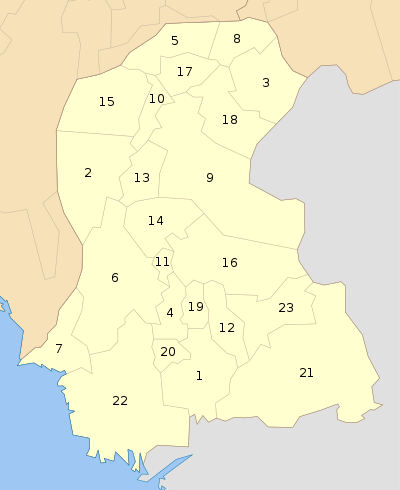
Economy :
Qayoom Abad Bridge Karachi
Navalrai Market Clock Tower Hyderabad Sindh has the second largest economy in Pakistan. A 2016 study commissioned by Pakistan Ministry of Planning found that urban Sindh and northern Punjab province are the most prosperous regions in Pakistan. Its GDP per capita was $1,400 in 2010 which is 50 percent more than the rest of the nation or 35 percent more than the national average. Historically, Sindh's contribution to Pakistan's GDP has been between 30% to 32.7%. Its share in the service sector has ranged from 21% to 27.8% and in the agriculture sector from 21.4% to 27.7%. Performance wise, its best sector is the manufacturing sector, where its share has ranged from 36.7% to 46.5%.
Endowed with coastal access, Sindh is a major centre of economic activity in Pakistan and has a highly diversified economy ranging from heavy industry and finance centred in Karachi to a substantial agricultural base along the Indus. Manufacturing includes machine products, cement, plastics, and other goods.
Agriculture is very important in Sindh with cotton, rice, wheat, sugar cane, dates, bananas, and mangoes as the most important crops. The largest and finer quality of rice is produced in Larkano district.
Education :
Major public and private educational institutes in Sindh include :
•
Adamjee Government
Science College
Children in a rural area of Sindh, 2012 The rich culture, art and architectural landscape of Sindh have fascinated historians. The culture, folktales, art and music of Sindh form a mosaic of human history.
Cultural heritage :
The ruins of an ancient mosque at Bhambore
Sindhi women collecting water from a reservoir on the way to Mubarak Village Sindh has a rich heritage of traditional handicraft that has evolved over the centuries. Perhaps the most professed exposition of Sindhi culture is in the handicrafts of Hala, a town some 30 kilometres from Hyderabad. Hala's artisans manufacture high-quality and impressively priced wooden handicrafts, textiles, paintings, handmade paper products, and blue pottery. Lacquered wood works known as Jandi, painting on wood, tiles, and pottery known as Kashi, hand weaved textiles including khadi, susi, and ajraks are synonymous with Sindhi culture preserved in Hala's handicraft.
The work of Sindhi artisans was sold in ancient markets of Damascus, Baghdad, Basra, Istanbul, Cairo and Samarkand. Referring to the lacquer work on wood locally known as Jandi, T. Posten (an English traveller who visited Sindh in the early 19th century) asserted that the articles of Hala could be compared with exquisite specimens of China. Technological improvements such as the spinning wheel (charkha) and treadle (pai-chah) in the weaver's loom were gradually introduced and the processes of designing, dyeing and printing by block were refined. The refined, lightweight, colourful, washable fabrics from Hala became a luxury for people used to the woollens and linens of the age.
Non-governmental organisations (NGOs) such as the World Wildlife Fund, Pakistan, play an important role to promote the culture of Sindh. They provide training to women artisans in Sindh so they get a source of income. They promote their products under the name of "Crafts Forever". Many women in rural Sindh are skilled in the production of caps. Sindhi caps are manufactured commercially on a small scale at New Saeedabad and Hala New. Sindhi people began celebrating Sindhi Topi Day on 6 December 2009, to preserve the historical culture of Sindh by wearing Ajrak and Sindhi topi.
Huts in the Thar desert Tourism :
This
section has multiple issues, does not cite any sources and needs
expansion. (June 2020)
•
Sachal Sarmast
(Sufi poet) Daraz near Ranipur
Sukkur Bridge
Gorakh Hill Station
Faiz Mahal, Khairpur
Ranikot Fort, one of the largest forts in the world
Chaukhandi tombs
Remains of 9th century Jain temple in Bhodesar near Nagarparkar
Excavated ruins of Mohenjo-daro
Karachi Beach
Qasim fort
Kot Diji
Bakri Waro Lake, Khairpur
National Museum of Pakistan
Kirthar National Park
Karoonjhar Mountains, Tharparkar
Shah Jahan Mosque, Thatta
Tomb of Shah Abdul Latif Bhittai
Keenjhar Lake
Lal Shahbaz Qalandar Source :
https://en.wikipedia.org/ |
|||||||||||||||||||||||||||||||||||||||||||||||||||||||||||||||||||||||||||||||||||||||||||||||||||||||||||||||||||||||||||
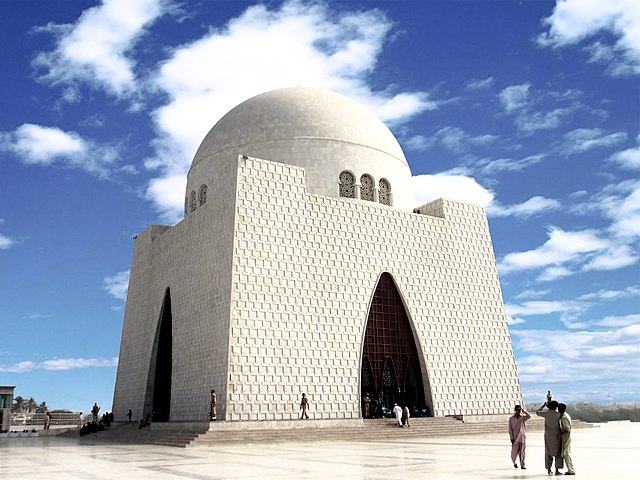
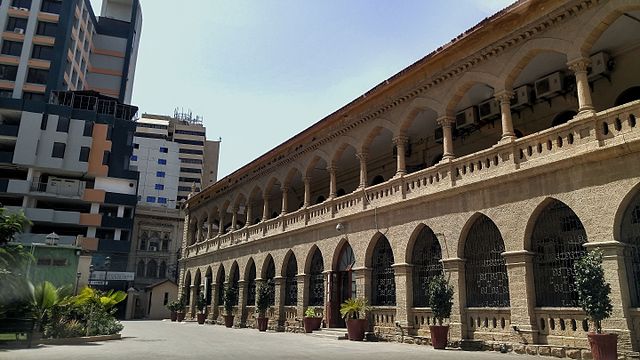
.jpg)
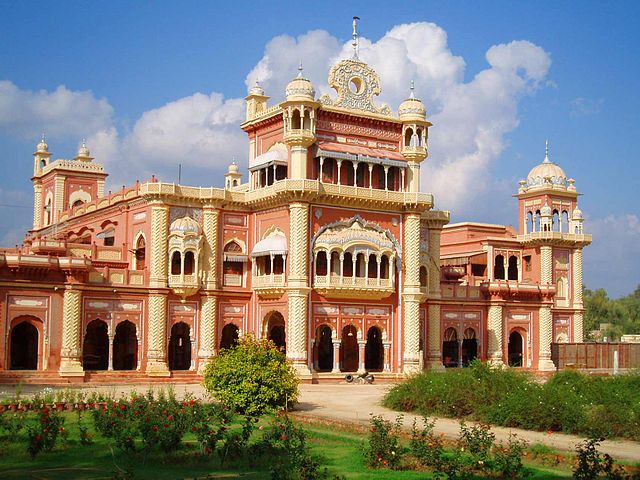
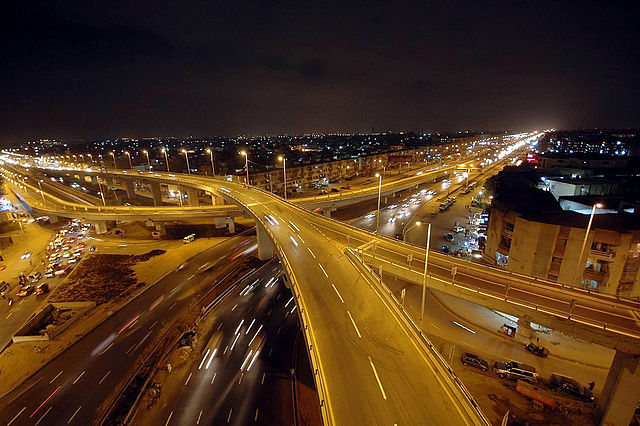
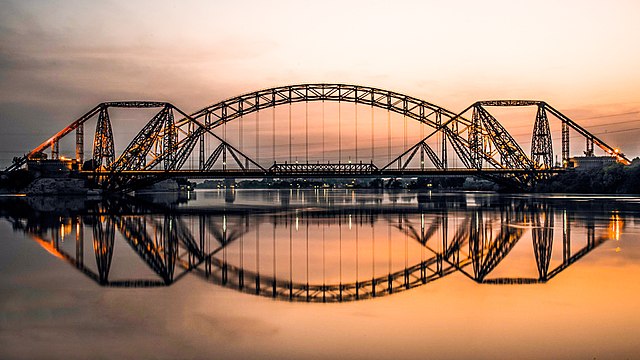
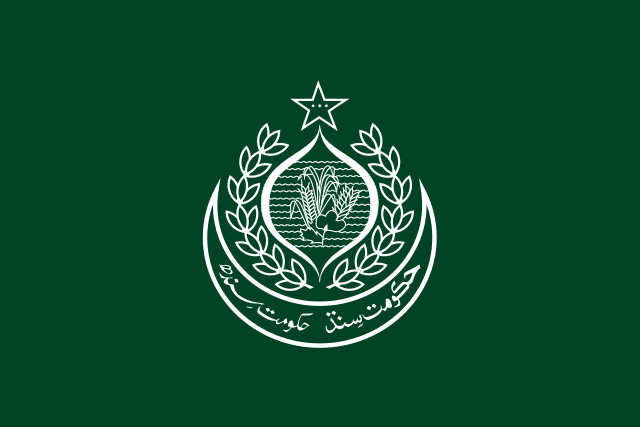
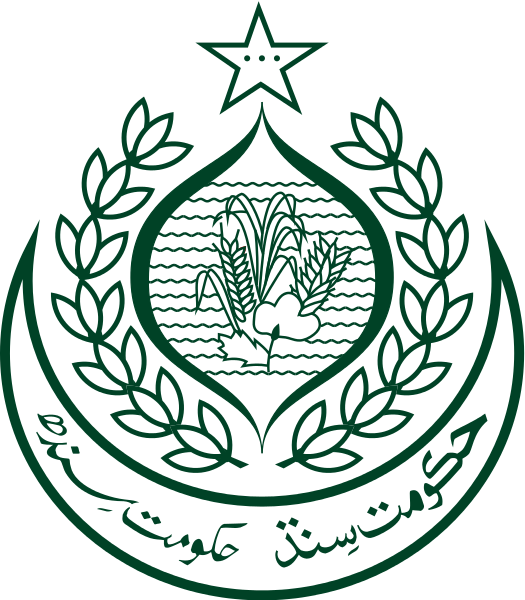
.svg.png)
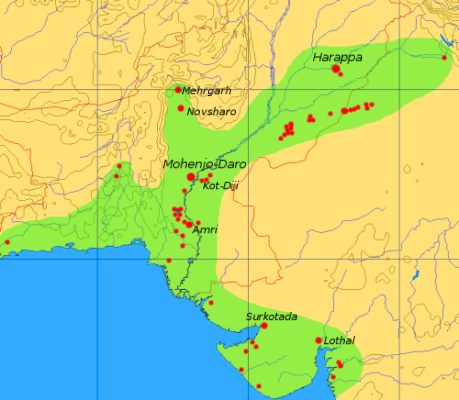
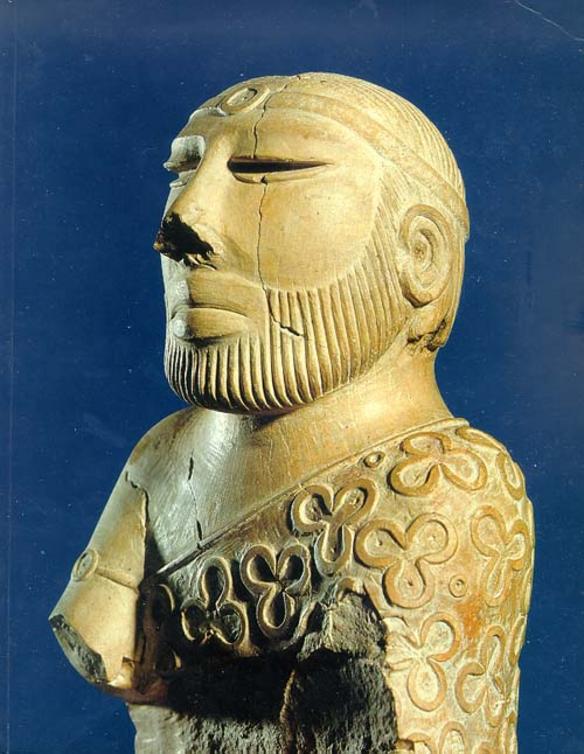
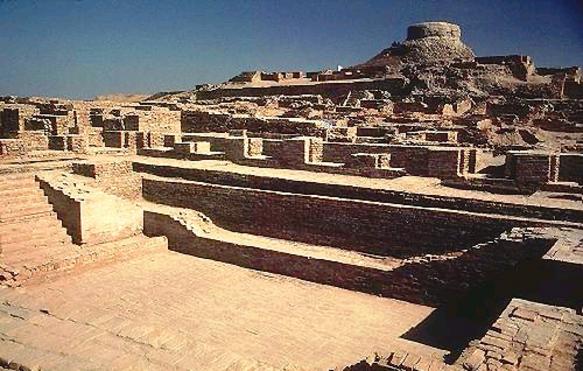
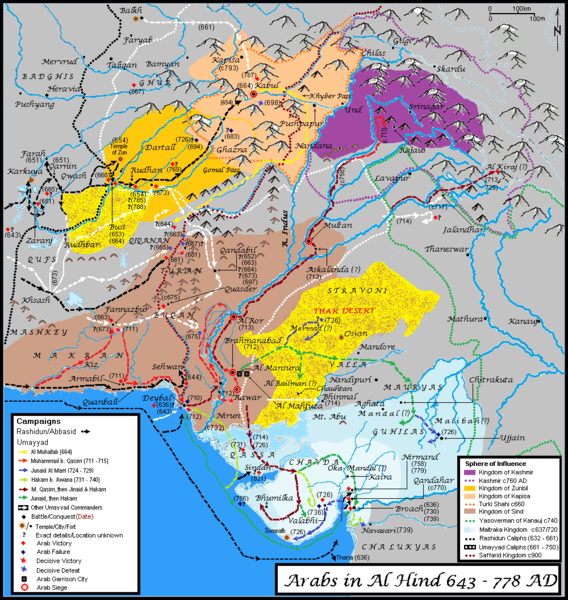
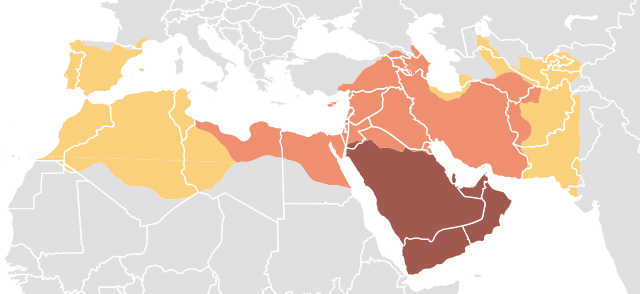
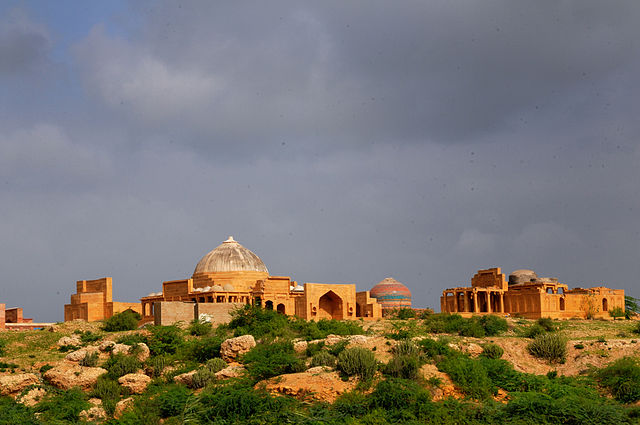


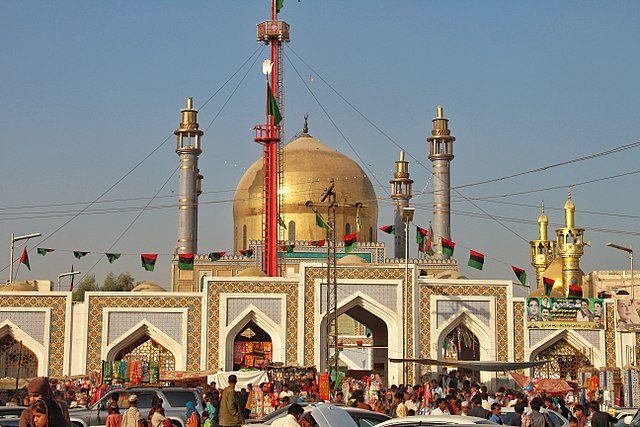
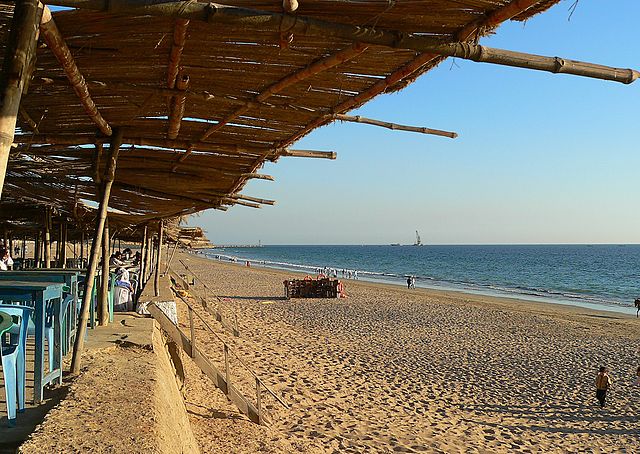
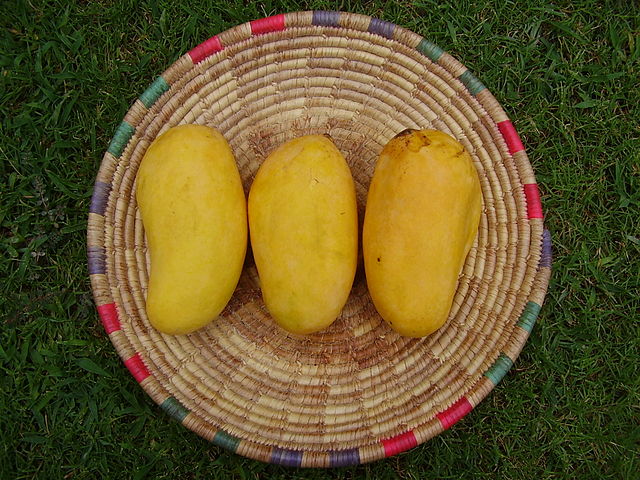
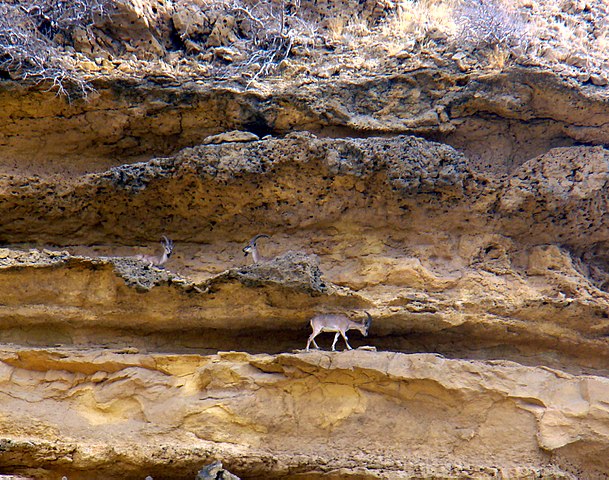
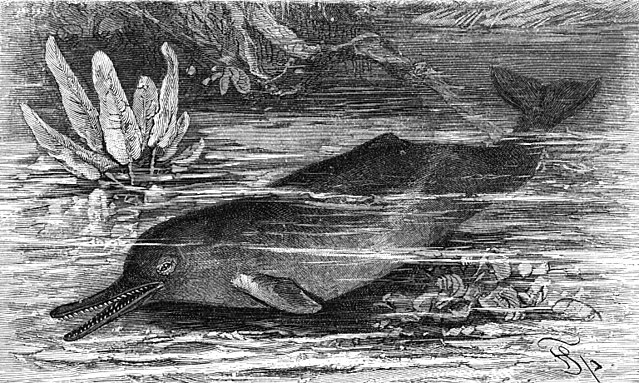
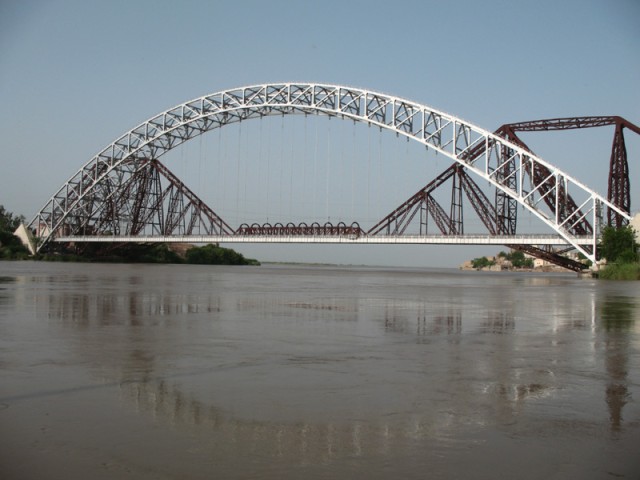

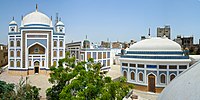

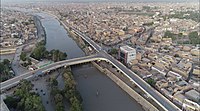
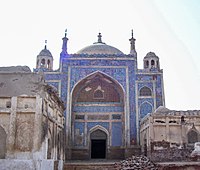
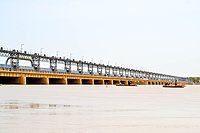
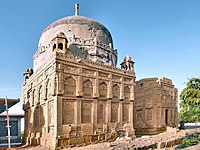
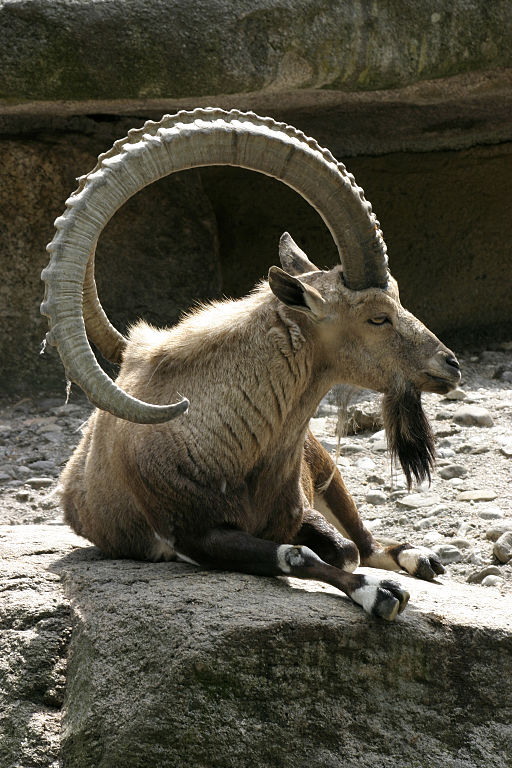
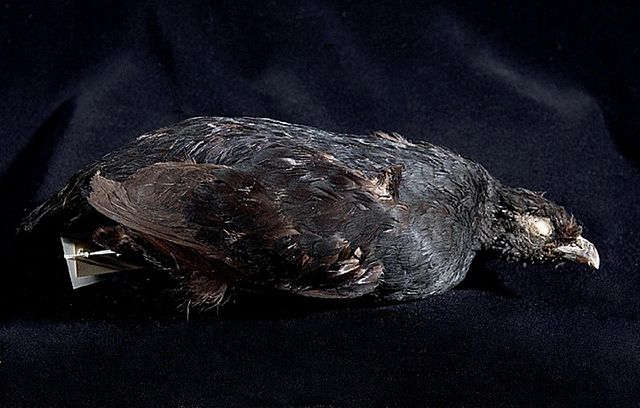
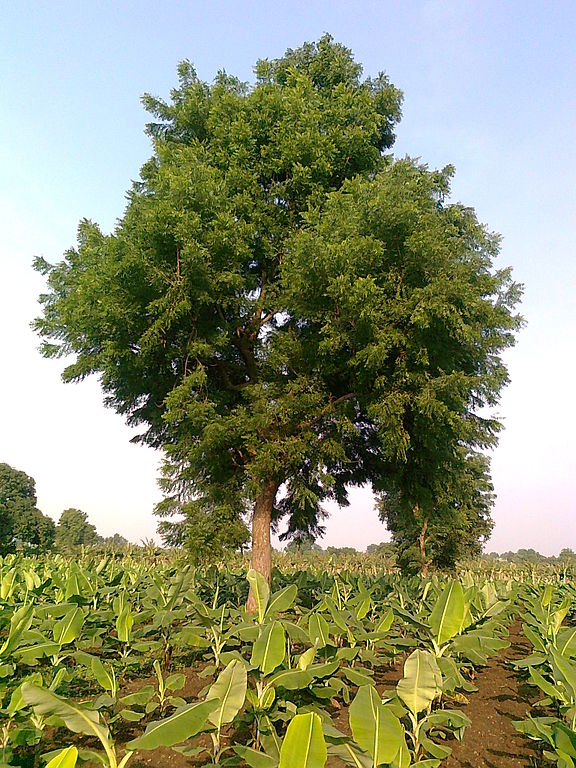
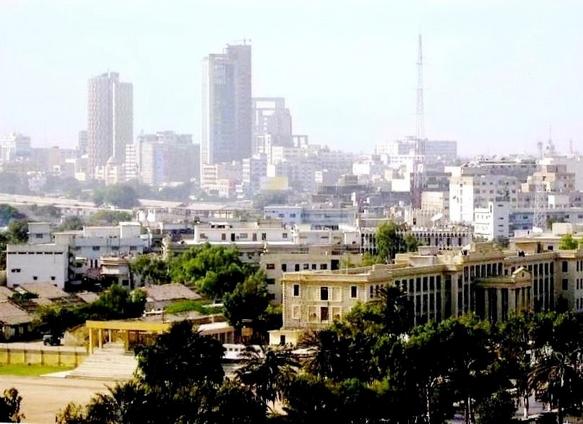
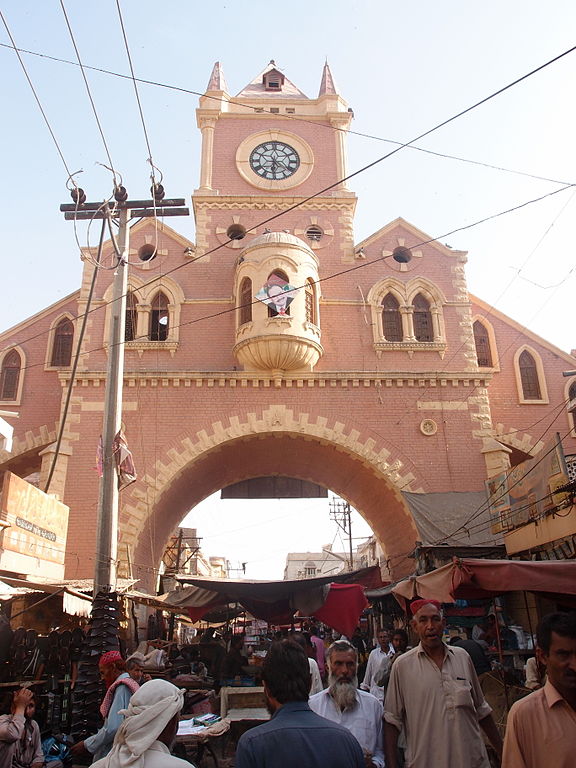
.jpg)
